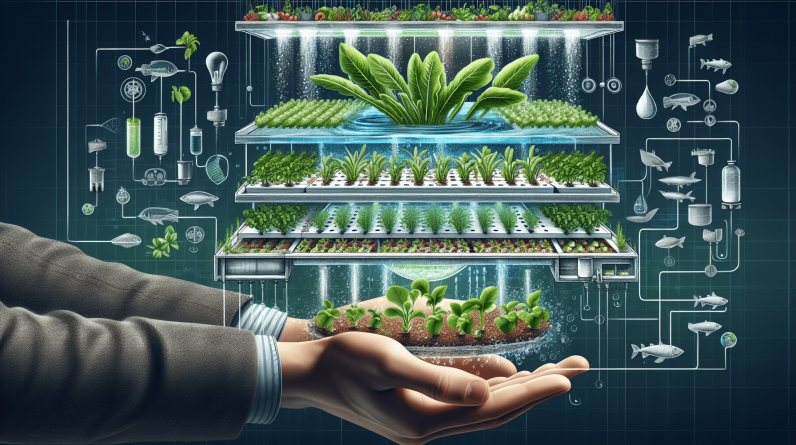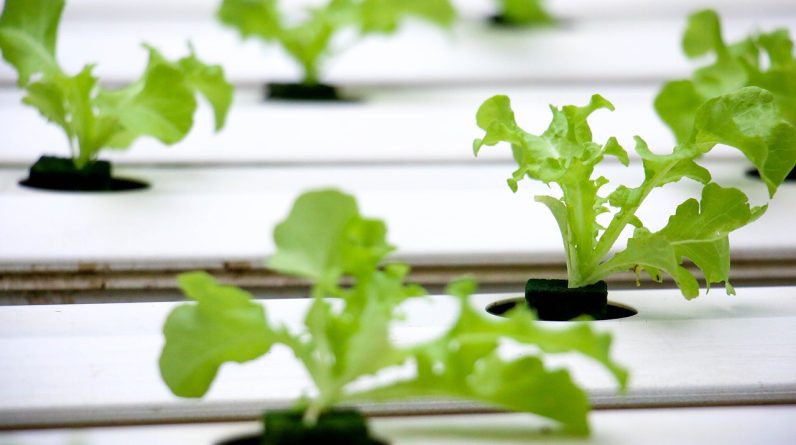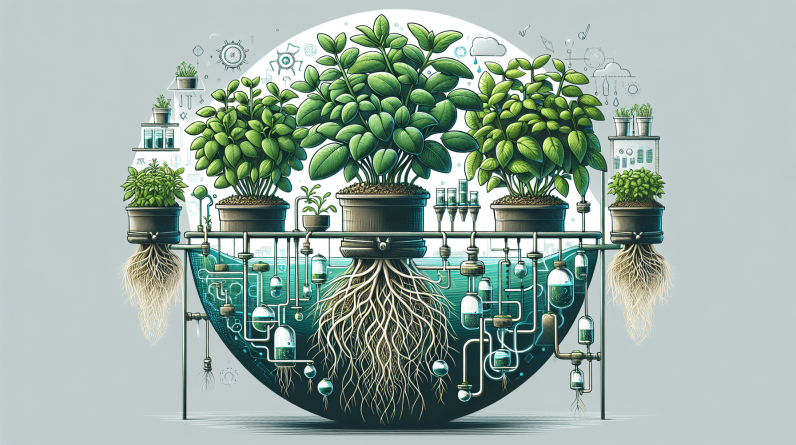
Are you someone who has always been interested in gardening but doesn’t have the outdoor space or green thumb to grow plants traditionally? Look no further! This article is your go-to guide for hydroponic gardening, a method that allows you to grow plants without soil. Whether you’re a complete beginner or have some experience, we’ll walk you through the basic principles, benefits, and how to get started in this fascinating and rewarding form of gardening. Get ready to discover a whole new world of greenery and watch your plants thrive in a soilless environment!
What is Hydroponic Gardening?
Definition of hydroponic gardening
Hydroponic gardening is a method of growing plants without using traditional soil. Instead, plants are grown in a nutrient-rich water solution, which allows them to receive essential nutrients directly. The word “hydroponics” itself comes from the Greek words “hydro,” meaning water, and “ponos,” meaning work.
History of hydroponic gardening
While hydroponic gardening may seem like a recent innovation, its origins can be traced back to ancient civilizations. The Hanging Gardens of Babylon, one of the Seven Wonders of the Ancient World, is believed to have used a form of hydroponics to grow plants. In more modern times, hydroponic systems emerged during the 17th century when scientists began experimenting with water culture techniques to study plant nutrition.
Advantages of Hydroponic Gardening
Water conservation
One of the significant benefits of hydroponic gardening is its water-saving capabilities. Unlike traditional soil-based gardening, which requires a significant amount of water, hydroponic systems use only a fraction of the water. The nutrient solution in hydroponics is recirculated, reducing water wastage and making it an environmentally friendly option.
Faster plant growth
Plants grown hydroponically tend to grow faster compared to their soil-grown counterparts. The reason behind this is that the plant’s roots have easy access to all the nutrients they need. With nutrients readily available, more energy can be dedicated to vegetative growth, resulting in faster and healthier plants.
No need for soil
In hydroponics, the need for soil is completely eliminated. This is especially beneficial for areas with poor soil quality or limited available space. As a result, gardening can be carried out in urban settings, rooftops, or indoors, making hydroponic gardening a versatile option for plant cultivation.
Less susceptibility to pests and diseases
By growing plants in a controlled environment, hydroponic systems are less prone to infestation by pests and diseases that are commonly found in soil-grown plants. The absence of soil helps eliminate many disease-causing organisms, reducing the need for pesticides and other chemical treatments.

Components of a Hydroponic System
Container or growing chamber
The container or growing chamber is where the plants are housed in a hydroponic system. It can be a simple tray, a series of grow pots, or even a vertical tower, depending on the type of system being utilized.
Nutrient solution
The nutrient solution is the key element in a hydroponic system. It consists of water and a specially formulated mixture of essential nutrients that the plants need for proper growth. Nutrient solutions can be either pre-mixed or custom-made based on the specific requirements of the plants being grown.
Growing medium
Although hydroponics doesn’t rely on soil, a growing medium is still used to support the plants’ roots. Common growing mediums include coco coir, perlite, vermiculite, or Rockwool cubes. The growing medium helps anchor the plants and provides stability while allowing oxygen and nutrient absorption.
Water supply
A reliable water supply is crucial for maintaining the hydroponic system. It serves as the basis for the nutrient solution and ensures the plants receive a constant supply of water. It is recommended to use filtered water or tap water that has been treated to remove any harmful chemicals or contaminants.
pH testing kit
Maintaining the correct pH level is essential for optimal plant growth in hydroponic systems. A pH testing kit allows you to monitor the acidity or alkalinity of the nutrient solution. Most plants thrive in a slightly acidic pH range between 5.5 and 6.5.
Light source
Since hydroponic gardening can be done indoors or in low-light environments, a supplemental light source is necessary. LED grow lights are a popular choice due to their energy efficiency and ability to provide the right spectrum of light for plant growth.
Air pump and air stones
Proper oxygenation is crucial for healthy root development in hydroponic systems. An air pump and air stones are used to introduce oxygen into the nutrient solution, promoting vigorous growth.
Different Types of Hydroponic Systems
Drip system
The drip system is one of the most popular and straightforward hydroponic setups. It involves delivering a nutrient solution directly to the plant’s root zone through small drip emitters. This system allows for precise control of nutrient delivery and is great for larger plants or those that require a consistent moisture level.
Ebb and flow system
Also known as the flood and drain system, the ebb and flow system periodically floods the plants’ root zone with nutrient solution and then drains it away. This cycle ensures that the plants receive both water and oxygen, promoting healthy growth.
NFT (Nutrient Film Technique) system
In the NFT system, a thin film of nutrient solution continuously flows across the bottom of a sloping channel that supports the plants’ roots. The nutrient solution is then collected and recirculated through the system. This method allows for maximum oxygen exposure to the roots and is commonly used for growing herbs and leafy greens.
Wick system
The wick system is considered one of the simplest and most passive hydroponic systems. It consists of a reservoir of nutrient solution, with a wick placed in it that transports the solution to the growing medium where the plants’ roots absorb nutrients. While easy to set up, this system may not be suitable for larger or thirstier plants.
Aeroponic system
In an aeroponic system, plant roots are suspended in the air and misted with a nutrient-rich solution. This method allows for maximum oxygenation of the roots and is known to promote rapid plant growth. However, aeroponic systems require more precise monitoring and may be less forgiving when it comes to maintenance.
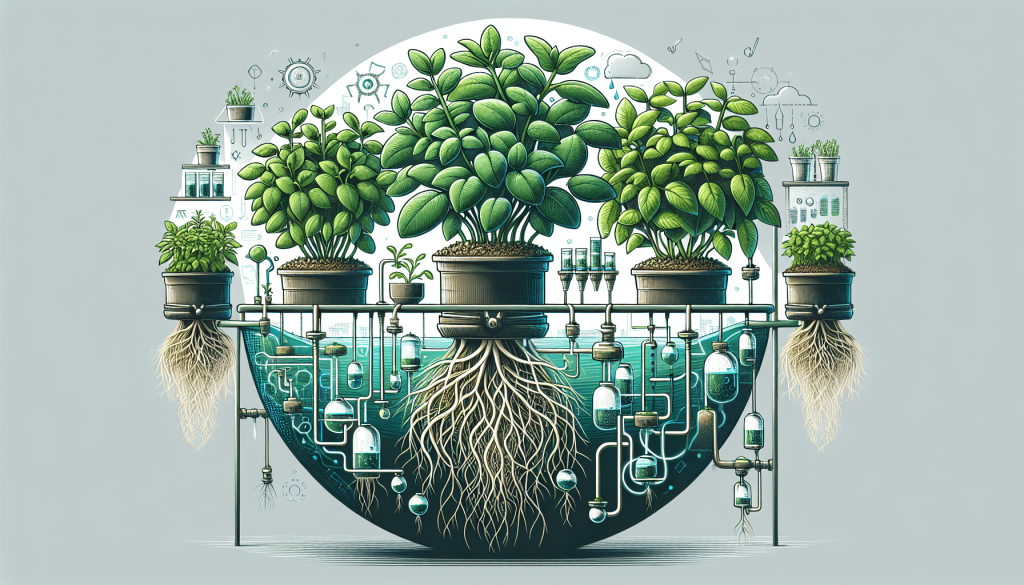
Choosing the Right Plants for Hydroponic Gardening
Leafy greens (lettuce, spinach, kale)
Leafy greens are some of the most popular plants to grow hydroponically. They thrive in the controlled environment of a hydroponic system and can provide a continuous yield throughout the year. Lettuce, spinach, and kale are excellent choices for hydroponic gardening due to their quick growth and shallow root systems.
Herbs (basil, parsley, cilantro)
Herbs are another great option for hydroponic gardening. Their small and compact size makes them suitable for various hydroponic systems, and they can be harvested continuously for a fresh supply of aromatic flavors. Basil, parsley, and cilantro are popular choices for hydroponic herb gardens.
Tomatoes
Tomatoes are well-suited for hydroponic gardening due to their high water and nutrient requirements. Hydroponic tomatoes often produce a higher yield and have fewer issues with pests or diseases compared to those grown in traditional soil. Compact tomato varieties, such as cherry tomatoes, work particularly well in hydroponic systems.
Cucumbers
Cucumbers are vining plants that grow vigorously in hydroponic setups, producing crisp and flavorful fruits. With support structures like trellises or vertical towers, cucumbers can grow vertically, maximizing space utilization in hydroponic gardens.
Strawberries
Growing strawberries hydroponically allows for optimal control over environmental factors, resulting in juicier and sweeter berries. Since strawberries typically have shallow root systems, they thrive in various hydroponic systems, including NFT and tower setups.
Setting Up a Hydroponic System
Determining the location
When setting up a hydroponic system, it is crucial to select an appropriate location. Ideally, the area should have access to natural light or be equipped with grow lights. Consider factors such as temperature, humidity, and ventilation to create an optimal growing environment for your plants.
Assembling the system
Once you have determined the location, assemble the components of your chosen hydroponic system according to the manufacturer’s instructions. Ensure that all necessary fittings and connections are secure to prevent leaks or malfunctions.
Installing the necessary components
Set up the water supply, including a reservoir for the nutrient solution and any required pumps or irrigation systems. Install the growing chamber or containers where the plants will be housed, making sure they are stable and provide adequate support for the growing medium and plants.
Mixing the nutrient solution
Prepare the nutrient solution by following the instructions on the nutrient solution package or formulating your own custom blend. Use filtered water or tap water that has been treated to remove chlorine or other harmful chemicals. Adhere to the recommended nutrient ratios for the specific plants you are growing.
Testing and adjusting the pH level
Regularly test the pH level of the nutrient solution using a pH testing kit. Adjust the pH level using pH up or pH down solutions to ensure it remains within the optimal range for your plants. This step is crucial, as imbalanced pH levels can lead to nutrient deficiencies or cause problems with nutrient uptake.
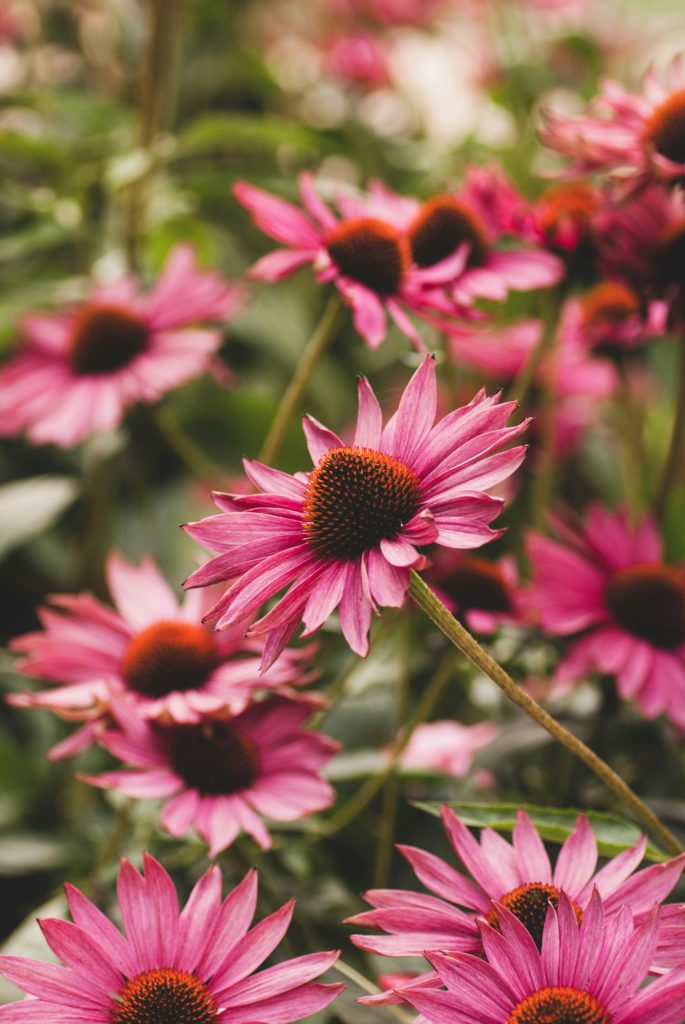
Maintaining a Hydroponic System
Regularly monitoring pH and nutrient levels
Maintaining proper pH and nutrient levels in your hydroponic system is key to healthy plant growth. Test the pH and nutrient levels on a regular basis and make necessary adjustments to keep them within the target range. Consistent monitoring will help prevent nutrient imbalances and ensure your plants receive the nutrients they need.
Pruning and training plants
As your plants grow, it may be necessary to prune or train them to promote better airflow and light distribution. Removing excess foliage or gently tying plants to supports can prevent overcrowding and create an optimal environment for growth.
Cleaning and disinfecting equipment
Regularly clean and disinfect your hydroponic equipment to prevent the buildup of algae, bacteria, or other contaminants. Rinse the system components with clean water and use a mild, plant-safe disinfectant to maintain a clean and sterile environment.
Preventing and controlling pests and diseases
While hydroponic systems are generally less susceptible to pests and diseases, it is still important to be vigilant. Implement preventative measures such as regularly inspecting plants for signs of pests, maintaining proper cleanliness, and reducing the risk of introducing pests from the outside. If necessary, use organic or approved pesticides suited for hydroponic gardening.
Nutrient Solutions for Hydroponic Gardening
Macronutrients and micronutrients
Nutrient solutions for hydroponic gardening consist of essential macronutrients and micronutrients that plants require for healthy growth. Macronutrients include nitrogen, phosphorus, and potassium, while micronutrients include trace elements like iron, zinc, and manganese. Balancing these nutrients is crucial for preventing deficiencies or excesses that can hinder plant development.
Organic vs. synthetic nutrient solutions
Hydroponic nutrient solutions can be either organic or synthetic. Organic nutrient solutions use naturally derived ingredients and are suitable for those who prefer an organic approach to gardening. Synthetic nutrient solutions are formulated with mineral salts and are often more precise and readily available. The choice between organic and synthetic depends on personal preferences and the specific needs of the plants being grown.
Determining the right nutrient formula for different plants
Different plants have varying nutrient requirements, so it is essential to determine the right nutrient formula for the specific plants you are growing. Research the nutrient preferences of each plant and follow established guidelines or consult with hydroponic experts to ensure the nutrient solution meets the unique needs of your plants.

Common Challenges and Troubleshooting
Root rot
Root rot can occur in hydroponic systems if the roots are over-exposed to water or if the nutrient solution becomes stagnant. To prevent root rot, ensure proper oxygenation and drainage of the roots. Regularly inspect the roots for signs of rot or discoloration, and adjust the system as needed.
Nutrient deficiencies or excesses
Imbalanced nutrient levels can lead to nutrient deficiencies or toxicities in plants. Monitor the nutrient levels regularly and adjust the nutrient solution accordingly. Look for common symptoms of nutrient deficiencies, such as yellowing leaves or stunted growth, and address them promptly to prevent further damage.
Algae growth
Algae growth is common in hydroponic systems exposed to light. It can clog irrigation systems, compete with plants for nutrients, and promote the growth of harmful pathogens. Prevent algae growth by keeping the hydroponic system in a dark or opaque container, maintaining proper cleanliness, and using beneficial bacteria or sterilizing agents.
Clogged irrigation system
An irrigation system that becomes clogged can disrupt nutrient delivery and impede plant growth. Regularly check for any obstructions or blockages in the system, such as debris or mineral buildup, and clean or replace affected components as necessary.
Harvesting and Enjoying Your Hydroponic Produce
Harvesting techniques
When harvesting your hydroponic produce, use clean and sanitized tools to prevent contamination. Depending on the plant, you may need to cut or pluck the mature fruits or leaves from the plant. Some plants, like leafy greens or herbs, can be harvested by selectively removing outer leaves while allowing the inner leaves to continue growing.
Storing and preserving hydroponic produce
To maximize the freshness and shelf life of your hydroponic produce, store them in a cool and dark place. Leafy greens can be washed, dried, and stored in a sealed bag or container in the refrigerator. Herbs can be stored in a glass of water or wrapped in a damp paper towel and kept in the refrigerator. Consult specific storage guidelines for each type of produce to ensure optimal freshness.
Using your homegrown produce in delicious recipes
One of the joys of hydroponic gardening is being able to enjoy the fruits of your labor in a variety of delicious recipes. Use your homegrown produce in salads, stir-fries, soups, or smoothies to add freshness and flavor. Experiment with different cooking techniques and explore new recipes to make the most of your hydroponically grown produce.
In conclusion, hydroponic gardening offers numerous advantages such as water conservation, faster plant growth, and the ability to grow plants without soil. By understanding the components and types of hydroponic systems, choosing suitable plants, and properly setting up and maintaining the system, you can enjoy a successful and rewarding hydroponic gardening experience. With the right nutrient solutions, troubleshooting techniques, and harvesting methods, you can savor the taste of your homegrown hydroponic produce in a variety of delicious dishes. So why not give hydroponic gardening a try and embark on a journey of nurturing and enjoying your very own thriving, soil-free garden?

Related Content
- Save Money and Eat Fresh with Hydroponics
- How to Install Hydroponic Systems in Small Spaces
- The Ultimate Guide to the Best Hydroponic Growing Medium Strategies 2025
- The Ultimate Guide to hydroponic root system: 10 Effective Strategies for 2025
- Creating a Thriving Garden with Hydroponic Vegetable Systems



